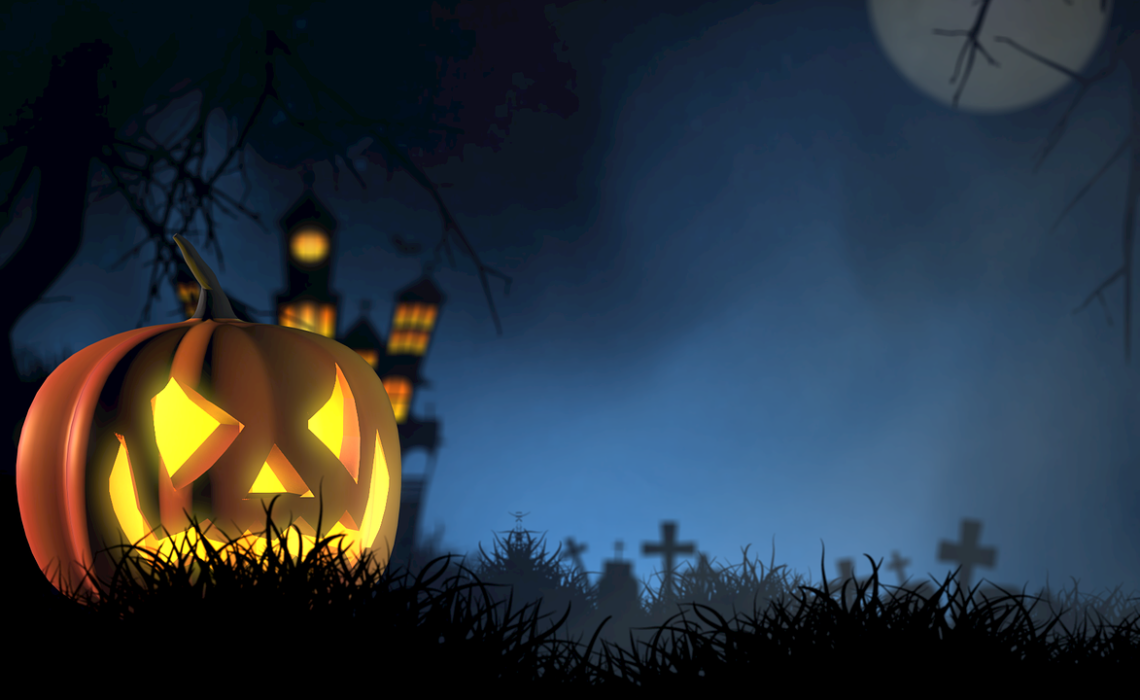The origins of Halloween – English Version
Category : Blog
Halloween takes place on October 31st. A lot of people have adopted this date in a big way, especially Americans and Canadians.
The tradition of Halloween comes from the ancient Celtic festival of Samhain /saũ.ən/ around two thousand years ago. Samhain was the Celtic New Year and it was originally celebrated on November 1st. The Celts originated in Central Europe, then migrated to Ireland, Wales, Scotland, and some other regions.
Samhain marked the end of summer and of the harvest season, as well as the beginning of winter. It was also the time for ghosts to return to earth for a day. So, people wore costumes made of animal skin and lit big bonfires to keep away evil spirits. They also liked to remember their dead loved ones.
In 837 AD (Anno Domini, in the year of our lord), the Catholic Church put the Christian celebration of All Saints’ Day on November 1st. Because of that, Samhain became All Hallows Eve – or Halloween – and moved to the night of October 31st. Hallow is an old English word meaning holy and e’ en in Scottish means eve. It is the day before All Saints Day.
Nowadays, Halloween is not a religious celebration and it is not about ancient rituals. It is a time for people to bring family together and spend time with neighbors.
Both in Canada and the USA, children wear costumes and go from house to house, giving people the choice of “trick or treat”. They usually get the treat (a piece of candy), so they do not have to play a mischievous trick. Children make a Jack o’ Lantern by cutting eyes, nose and mouth in a pumpkin, and putting a lighted candle inside.
Pumpkins
The Celts carved faces into vegetables like turnips and potatoes to scare the ghosts. It is sometimes called a jack-o’-lantern because of an Irish story about a man, Jack. He played a trick on the devil and then had to walk the earth forever as a punishment. People started to carve demonic faces out of turnips to frighten away Jack’s soul. When Irish immigrants moved to the U.S., they began carving jack-o’-lanterns from pumpkins.
Costumes / Masks
The Celts were afraid of the ghosts that came on Samhain. If they went outside after dark, they covered their faces with masks. They hoped any ghosts they met would think they were ghosts too.
Trick or treat
This is another tradition that began in Europe, this time in England. After All Saints’ Day on November 1st, the church introduced All Souls’ Day on the 2nd. Rich people gave poor people ‘soul cakes’, a small cake made with spices and raisins. It replaced the Celtic tradition of leaving food outside houses for the ghosts. ‘Going a-souling’ was popular in England for hundreds of years until about the 1930s. The Americans kept the tradition, but today children knock on people’s doors and ask for sweets. Going trick or treating is so popular that a quarter of the sweets for the year in the United States are sold on one day.
Sources: a) The Creek Newspaper – Oct. 1982 b) Encyclopedia Britannica c) British Council LearnEnglish. D) Wikipedia E) Library of Congress

Nenhum Comentário